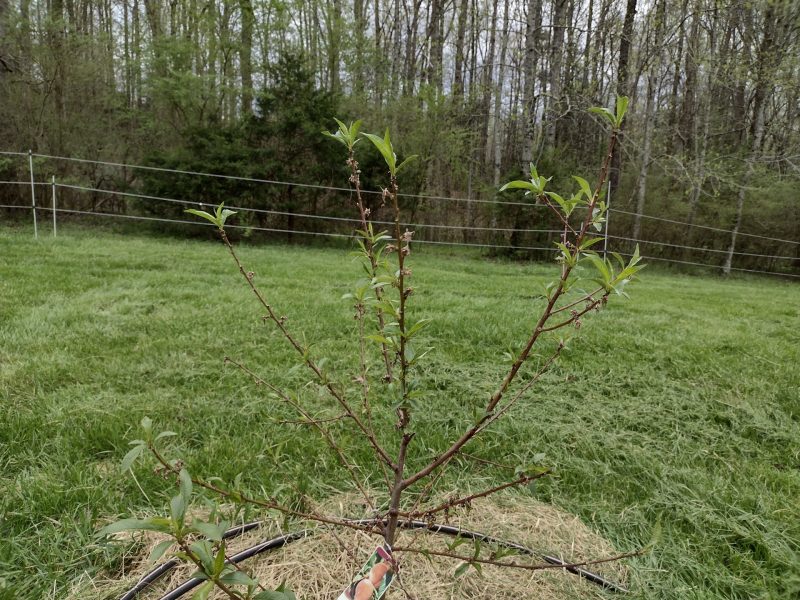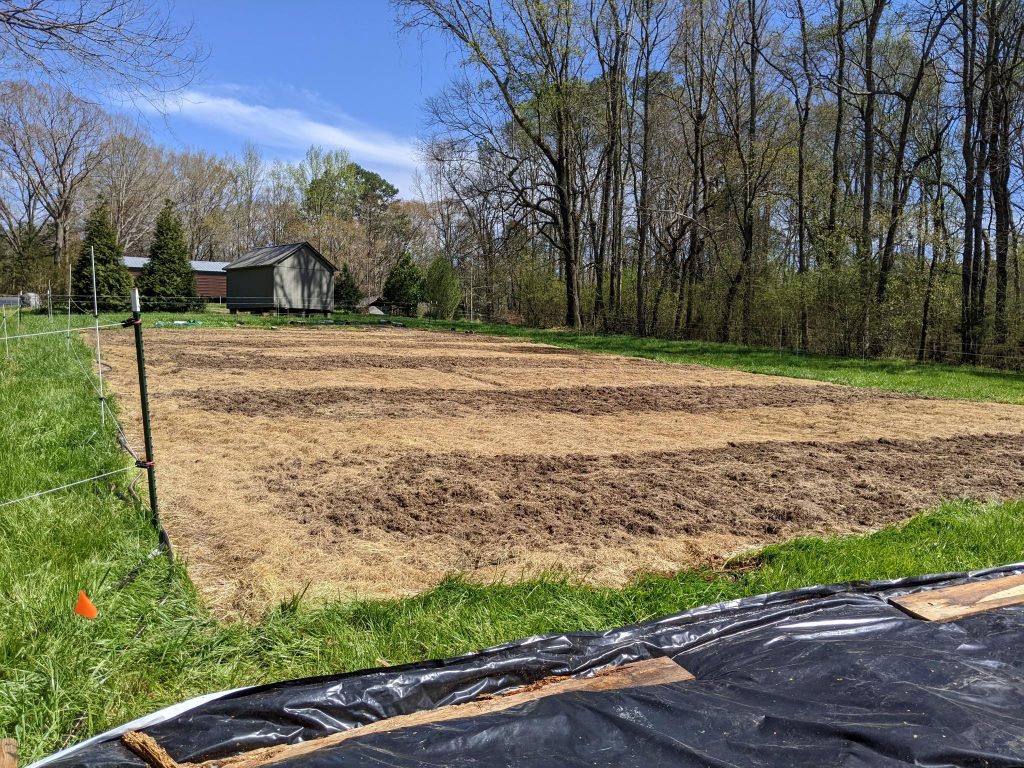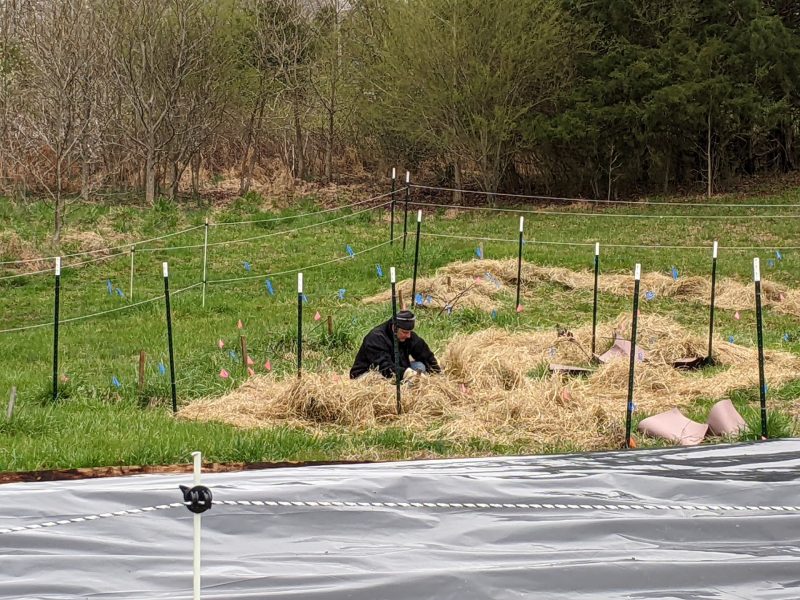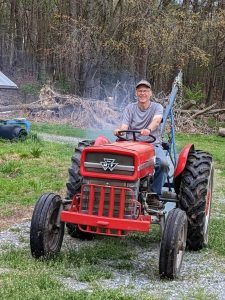
Lets take a walk around the farm and see what is growing!
One of the topics that comes up in the video is the concept of imposing my will on the farm. Planning for the growing season requires creating a calendar of when to do what. Different crops need to go in at different times so that requires planning. We need to have the ground ready to plant. This year is very much a building year so we had infrastructure that had to go in. We put in:
- 3D anti-deer fences
- drip irrigation
- new beds for planting that were previously pasture
We have also been working to add additional perennials this year
- elderberries
- figs
- peaches
The garden beds are shaping up. They spent the last three months under a silage tarp but are now mostly ready to plant. The elderberries, figs and peaches are growing.
We also did work in the food forest area that we started building in 2021. We added a trellis for the blackberries and covered the hugelkultur mound with a silage tarp for 3 months to help suppress weed growth this summer. We also put down a biodegradeable paper around the bushes and trees and covered it with hay.
These have been great successes. Which would not be possible without everyone that has helped out on the farm. Our farm is structured as a communal community farm. We have another family that helps out. We share the harvest with them. Having their help has made this possible.
One of the challenges of accomplishing these things is timing. It is critical to have materials (hay, biodegradeable paper, plants, hardware and lines for the drip irrigation, and a bunch of various item) in place and ready to install. The next step is to have a plan where the materials and manpower are ready to go. I developed a calendar for the year. Then each week we have a list of items to accomplish. The list makes helps everyone to plan their time and know what tools to bring. It also helps us to work as a group and sometimes to break down in to 2 groups to work on some items in parallel.
Can Impose My Will on the Farm?
Weather is always a factor with outdoor activities like hiking or camping. Weather is an even bigger factor with farming. Not only the weather on the day you plan to work in the fields but also the weather leading up to the days you have planned to work.
If the fields are wet, then you may have to wait for them to dry out before preparing beds or planting. If the soil isn’t warm enough then seeds won’t germinate. A late frost can kill young plants. Maybe the tractor breaks down in the middle of the field (been there).
It takes effort and organization to
- make sure the materials and tools you need are ready
- make sure any equipment is ready for use
- confirm that the people helping are in place and ready
Days and weeks before you
- made sure you had budget for anything that needed to be paid for
- ordered any materials or equipment and made sure it arrived
So you have all this lined up and on the calendar. But that doesn’t mean it will happen. Weather, equipment issues, or other frustrations can keep your plans from happening.
My desire and my decision to do X,Y, and Z on a certain day doesn’t mean it will happen. My will to accomplish work on the farm is totally subservient to reality of circumstance. There are many things that can delay plans or even cancel them. Its really easy to assume that because I planned something and got everything ready, then it will happen. The life lesson comes when it doesn’t . Farming will teach that life lesson again and again. I’m not able to impose my will on the farm. It works better if I set up goals and plan for success but not get upset if those plans don’t work out. Humility wins. Farming, or even gardening, will definitely teach you humility, patience and the value of a backup plan / rain date.
Parting words: plant a garden!






















 I’m a mechanical engineer turned weekend farmer, so I’m just smart enough to know that there is a lot that I don’t know especially when it comes to farming, permaculture and food forests. I’ve been heavily influenced in my love of farming and permaculture by my Mom and Dad and also by people like
I’m a mechanical engineer turned weekend farmer, so I’m just smart enough to know that there is a lot that I don’t know especially when it comes to farming, permaculture and food forests. I’ve been heavily influenced in my love of farming and permaculture by my Mom and Dad and also by people like  Connie has her certificate in Sustainable Agriculture from CCCC. She really enjoyed the classes at the community college and learned a lot. The program was a mixture of classes and work on the school farm. What she learned has really added to our technical proficiency on the farm.
Connie has her certificate in Sustainable Agriculture from CCCC. She really enjoyed the classes at the community college and learned a lot. The program was a mixture of classes and work on the school farm. What she learned has really added to our technical proficiency on the farm.